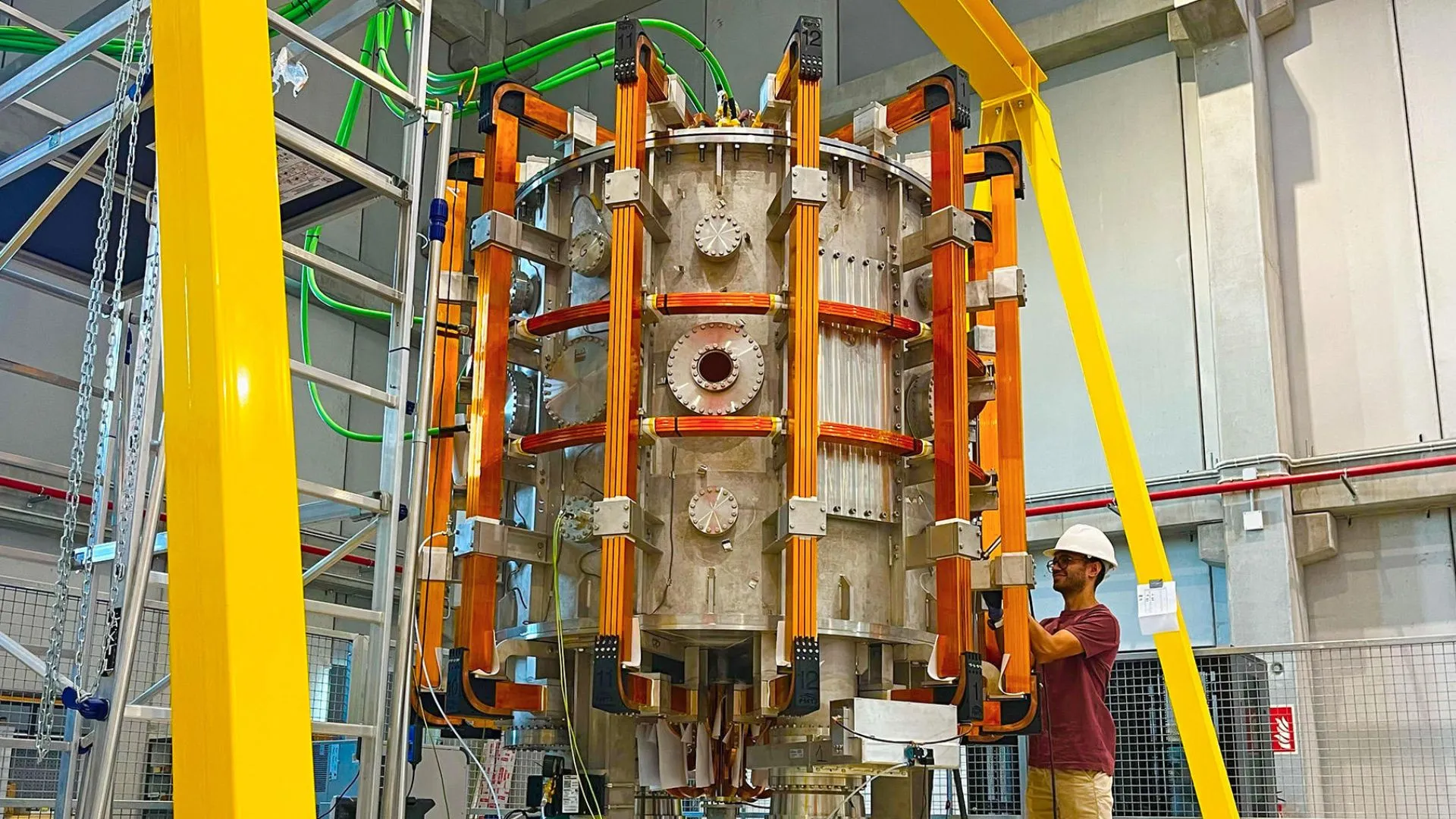
An international team of scientists has developed an artificial intelligence capable of creating highly detailed data inside a fusion reactor, effectively acting as a virtual sensor.
The AI, called Diag2Diag, is designed to improve the monitoring and control of the plasma fuel in fusion devices, a step that could lead to more reliable and economical fusion power plants.
The technology functions by analyzing the measurements from existing sensors to generate new, synthetic data for another sensor that may be failing or too slow to capture key events.
Using visual information
Azarakhsh Jalalvand of Princeton University, the paper’s lead author, compares the concept to an AI watching a silent movie and generating a full soundtrack purely from the visual information.
“We have found a way to take the data from a bunch of sensors in a system and generate a synthetic version of the data for a different kind of sensor in that system,” Jalalvand said.
This AI has already provided new physical insights. It supplied key evidence supporting a prominent theory on how to suppress edge-localized modes (ELMs), which are intense energy bursts that can damage reactor components.
The theory suggests that applying small magnetic fields creates “magnetic islands” that stabilize the plasma by flattening its temperature and density. Physical sensors could not fully observe this effect.
“Diag2Diag provided much more details on how this happens and how it evolves,” said PPPL Principal Research Scientist Qiming Hu, who worked on the project.
The AI’s data clearly showed the simultaneous flattening of both properties, offering strong validation for the control method.
Critical for commercial fusion power
Such detailed monitoring is critical for developing commercial fusion power. While current experimental reactors can be shut down if a sensor fails, future power plants must operate continuously.
“If we are thinking about fusion as a source of energy, it needs to work 24/7, without interruption,” Jalalvand noted.
The technology also offers significant economic and design benefits. By reducing the need for numerous physical sensors, future fusion reactors could become more compact, simpler, and less expensive to build and maintain.
“Diag2Diag is kind of giving your diagnostics a boost without spending hardware money,” concluded Egemen Kolemen, the project’s principal investigator.
The team suggests the AI could also be applied to other fields, such as enhancing data from sensors on spacecraft or in robotic surgery.
Using AI to enhance fusion tech
The use of AI in improving nuclear fusion tech has increased exponentially across the world. Recently, researchers in China created two new AI systems to improve the safety and efficiency of fusion energy experiments by predicting plasma failures with extreme accuracy.
In tests, the system reached a 94% success rate in early detection, issuing warnings about 137 milliseconds before disruptions occur – giving operators valuable time to act.
In another development, scientists at the Lawrence Livermore National Laboratory (LLNL) used an AI model to predict the outcome of a nuclear fusion experiment with an impressive 74% accuracy.
Besides, a team of researchers from Commonwealth Fusion Systems (CFS), the US Department of Energy’s (DOE) Princeton Plasma Physics Laboratory (PPPL), and Oak Ridge National Laboratory has developed a new AI-powered method, called HEAT-ML, that can protect fusion reactors from the extreme heat generated by plasma.



